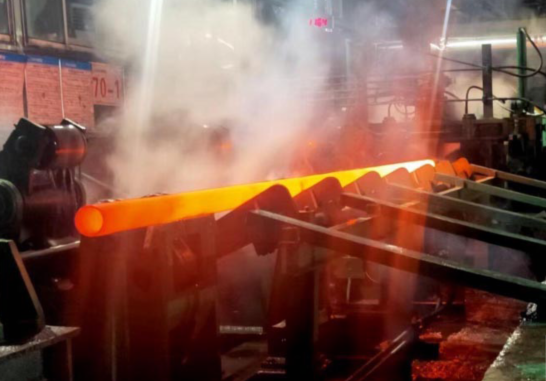
Requirements and Thickness Restrictions for Heat Treatment of Carbon Steel Pipes
The concept and necessity of heat treatment of carbon steel pipes:
Carbon steel pipes need to go through a series of processing and treatments during the manufacturing process, of which heat treatment is a very important link. Heat treatment is the use of heating, insulation and cooling to regulate and improve the structure and performance of metal materials, thereby improving their performance and service life. For carbon steel pipes, heat treatment can make the organizational structure more uniform, reduce the grain size, increase the hardness and strength, improve the plasticity and toughness of the steel pipe, avoid cracks and deformation due to stress, thereby improving the pipe's durability. service life and safety performance.

Possible problems during use of carbon steel pipes:
When using carbon steel pipes, the wall thickness of the pipe will have a certain impact on the performance of the pipe. When the wall thickness of the pipeline is thin, the pipeline is prone to rupture, explosion and other accidents, seriously threatening people's safety. When the wall thickness of the pipe is thicker, greater stress will be generated inside the pipe, causing deformation or cracks of the pipe, affecting the service life and safety performance of the pipe.
The importance of pipe heat treatment:
Pipeline heat treatment can not only enhance the strength, toughness and hardness of the pipeline, reduce the brittleness and internal stress of the pipeline, but also improve the corrosion resistance of the pipeline and extend the service life of the pipeline. Therefore, pipe heat treatment is a very important part.
Requirements and thickness restrictions for heat treatment of carbon steel pipes:
The heat treatment of carbon steel pipes is generally divided into four types: annealing, normalizing and quenching and tempering. The specific requirements and parameters are related to the material, thickness and shape of the steel pipe. Under normal circumstances, carbon steel pipes need to be heat treated when the thickness reaches more than 25mm. For carbon steel pipes with a diameter less than 20mm, the hardness after heat treatment should be between 85 - 100 HBW; for steel pipes with a diameter between 20-60mm, the hardness should be controlled between 92-130 HBW; and for pipes with a diameter greater than 60mm For carbon steel pipes, heat treatment parameters and requirements need to be determined according to the specific conditions of use.
1. When the wall thickness of the carbon steel pipe is greater than or equal to 26mm, preheating is required before welding.
2. Preheating method and temperature Electric heating method can be used for preheating. The preheating temperature is 100~200℃. The interlayer temperature should not be lower than the preheating temperature during welding.
3. Preheating range For carbon steel pipe butt welds, the preheating range before welding should be no less than 3 times the wall thickness on both sides of the groove. The inside and outside are heat-penetrated and local overheating is prevented. The 100mm range outside the heating zone should be insulated.
The following are the steps for heat treatment:
1. Pretreatment: Before pipes are heat treated, they need to undergo pretreatment processes such as cleaning, oil removal, and scale removal.
2. Heating: Heat the pipe to the specified temperature and maintain it for a certain period of time.
3. Cooling: The pipe is quickly cooled from a high temperature state to obtain the required structure and performance.
4. Quenching: When the pipe is cooled to the appropriate temperature, the pipe is immersed in the quenching medium to quickly cool and harden the pipe.
5. Tempering: The quenched pipe is tempered at the appropriate temperature to eliminate the brittleness of the pipe and improve its toughness and strength.
Things to note when heat treating carbon steel pipes:
When heat treating carbon steel pipes, you need to pay attention to the following points:
1. Determine the correct heat treatment temperature and time to avoid quality problems caused by overheating or undercooling.
2. Control the heating and cooling rates during the heat treatment process to prevent steel pipe deformation, cracking and other problems caused by excessive heating and cooling.
3. When performing quenching, attention needs to be paid to the selection of quenching medium and temperature control to avoid problems such as deformation and cracks of the steel pipe caused by improper quenching medium or excessive temperature.
4. During the heat treatment process, the surface of the steel pipe needs to be cleaned and protected to avoid affecting the heat treatment effect due to oxidation or the accumulation of other pollutants.
Conclusion:
For carbon steel pipes, heat treatment is a very important process that can effectively improve the performance and service life of steel pipes. When performing heat treatment, it is necessary to select appropriate heat treatment methods and parameters according to specific conditions, and follow normal operating procedures and precautions to ensure the maximum heat treatment quality and effect.
Read more: Carbon Steel Pipe vs Stainless Steel Pipe


